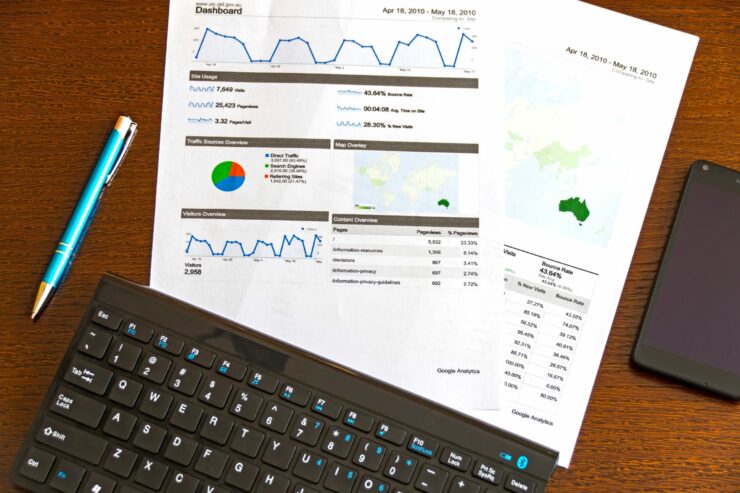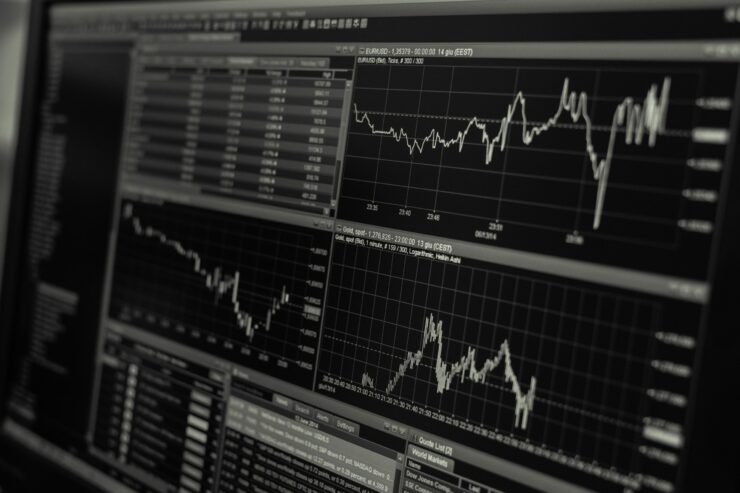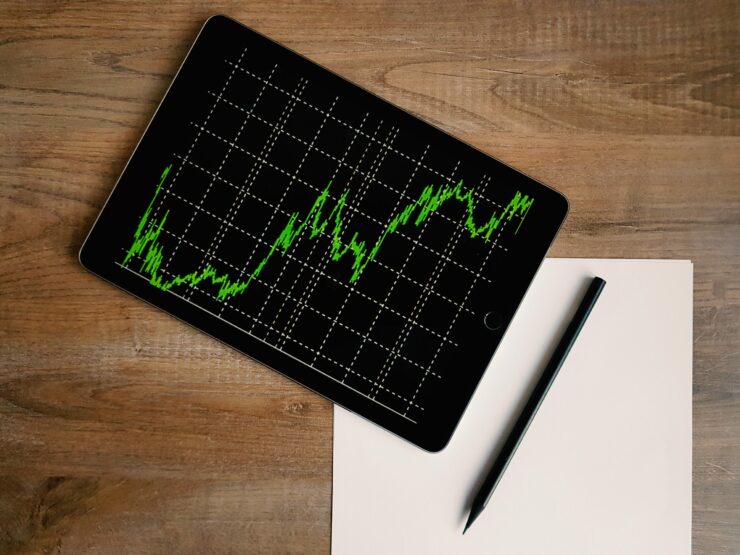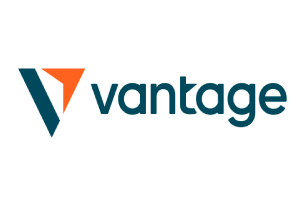Stock trading used to be the domain of brokerage firms, trading houses, and other financial institutions. Such entities were the only ones who could get instant access to information on how stocks were performing throughout the trading day.
Our Forex Signals
1 - month
Subscription
 Up to 15 signals daily
Up to 15 signals daily 76% success rate
76% success rate Entry, take profit & stop loss
Entry, take profit & stop loss Amount to risk per trade
Amount to risk per trade Risk reward ratio
Risk reward ratiomonth
3 - month
Subscription
 Up to 15 signals daily
Up to 15 signals daily 76% success rate
76% success rate Entry, take profit & stop loss
Entry, take profit & stop loss Amount to risk per trade
Amount to risk per trade Risk reward ratio
Risk reward ratiomonth
 Most popular
Most popular
6 - month
Subscription
 Up to 15 signals daily
Up to 15 signals daily 76% success rate
76% success rate Entry, take profit & stop loss
Entry, take profit & stop loss Amount to risk per trade
Amount to risk per trade Risk reward ratio
Risk reward ratiomonth
Lifetime
Subscription
 Up to 15 signals daily
Up to 15 signals daily 76% success rate
76% success rate Entry, take profit & stop loss
Entry, take profit & stop loss Amount to risk per trade
Amount to risk per trade Risk reward ratio
Risk reward ratioSeparate Swing Trading Group
 Up to 3 signals weekly
Up to 3 signals weekly 76% success rate
76% success rate Entry, take profit & stop loss
Entry, take profit & stop loss Amount to risk per trade
Amount to risk per trade Risk reward ratio
Risk reward ratiomonth
1 - month
Subscription
 Up to 15 signals daily
Up to 15 signals daily 76% success rate
76% success rate Entry, take profit & stop loss
Entry, take profit & stop loss Amount to risk per trade
Amount to risk per trade Risk reward ratio
Risk reward ratiotime
However, today, with the launch of internet and stock trading websites, it has become easier for individual traders to participate in the rush of day trading.
Day trading is defined as the process of buying and selling assets in a single trading day. The exchange is done in order to make a profit from the sale. As it is evident, in day trading, you do not hold on to an asset for more than one day.
But, often, traders keep a position open only for a few hours or even minutes. Therefore, the profit is based on small price differences and often facilitated by leverage.
For a novice, trying to learn day trading might be a little challenging. To help you grasp the concept better, we have created an elaborate guide on what day trading is and how you can start today!
Eightcap - Regulated Platform With Tight Spreads

- Minimum deposit of just 250 USD to get lifetime access to all the VIP channels
- Use our Secure and Encrypted Infrastructure
- Spreads from 0.0 pips on Raw Accounts
- Trade on the Award-Winning MT4 & MT5 Platforms
- Multi-jurisdictional Regulation
- No Commission Trading on Standard Accounts

Learn Day Trading – The Basics?
To break down the concept, day trading is a speculative investing style that entails the opening and closing of a stock position within a day.
Let us consider a quick example. If you open a new trade at 11 am and close it by 2 pm the same day, then, for all intents and purposes, you have completed a day trade. If you close the same position the following morning, in theory, it will not account for a day trade.

That being said, a day trader might place hundreds of trades each day. For a skilled investor, these small gains could quickly add up to a considerable sum with the right strategy in place. They use technical research and trading ideologies to make profits on a short term basis. This often involves using margin to boost the trader’s buying power – which is crucial when you factor in the smaller percentage targets.
How To Prepare for Day Trading
To learn day trading successfully, you need to be equipped with knowledge of how the market works. There should also be a strategy that helps you decide how to manage money and the different parameters of buying and selling assets.
However, it is essential to keep in mind that even the most seasoned trader will occasionally face losses in the field. With that said, their experience in the industry will equip them to deal with the consequences of such losses. Whereas, this is where novices struggle the most.
Nevertheless, the first step to enter the day trading space is to find a regulated online broker. This will give you access to thousands of financial instruments for you to trade-in. This could be anything from oil, indices, gold, stocks, ETFs, and, most recently, cryptocurrencies.
When you know which asset you want to trade, your next job is speculating on its future price movement. If you make the speculate correctly, you will make money. If not, you will have to find a way to bear the losses, and subsequently, move on to your next day trade.
Advantages of Day Trading
- If successful, there is potential for substantial financial gain.
- Access to thousands of markets.
- Available leverage to trade with more than you have in your account.
- The option of long and short trading.
- Lots of payment methods to get money into the broker.
- Secure trading with mobile apps.
What to Consider
Crucially, you will need to be prepared to face and handle the emotional repercussions of a trade gone wrong.
The world of day trading is expeditious, and it requires a thorough understanding of the markets. But as they say, it is never too late to learn day trading – which is why we have compiled this highly comprehensive guide!
The Fundamentals of Day Trading
Before you venture into day trading with real money, there are a few things that you need to have.
- In-depth knowledge of day trading jargon and technical analysis.
- A strategy that you can use, which has been proven successful.
- A day trading simulator that can help find you a proof of profitability.
In this section, we will get into a detailed analysis of the fundamentals so that you can learn day trading with ease.
Long Trading vs. Short Trading
In a traditional setting, you get just one option – you speculate that a company’s shares are going to rise in value and invest in them. This way, you can sell and reap the profits. As such, when you buy a stock to sell it later at a profit, it is called long trading.
However, today, there is another option to sell your assets first. In what is called “short trading,” you speculate that the asset will depreciate.
For instance:
- Let’s say that you guess the value of XYZ is set to decrease in the next few hours.
- You open your trade by placing a sell order. If you sell 500 shares of XYZ, your account will immediately show -500.
- If there is a 5% decline, when you repurchase them, you essentially make a profit. If not, your account will still be negative, translating that you have lost money.
However, by using a regulated CFD broker, you can go short on thousands of financial instruments at the click of a button. This is because CFD instruments merely track the underlying asset – making it highly conducive for day traders!
Short-Term Trading
As we mentioned earlier, day trading is a form of short-term trading that typically see investors close a position on a same-day basis. At the other end of the spectrum, when investing in traditional stocks in the long run, you are hoping to ride out the waves of fluctuation found in the market.

Small Margin, High Volume
In day trading, you are looking to make profits from even the smallest of variances in asset prices. This is particularly the case when you are trading liquid assets such as natural gas, oil, gold, or indices. Such stocks tend to fluctuate at low levels.
To maximize the profits, what day traders do is to place multiple trades throughout the day, albeit, not every trade will turn out to be profitable. Ultimately, at the end of the trading day, you want to have a win rate of above 50% – at least in theory, anyway.
That is why day traders have to ensure that they utilize proven and established strategies – which we cover below.
Day Trading Strategies
A day trader can either choose to adopt a strategy that has been proven successful or instead, develops their own. If you are going for the second option, you might have to spend a considerable amount of time researching, back-testing, and refining it before you stake real money on it.
Many beginners try to learn day trading through an existent strategy and master it accordingly. As you gain more experience, you might try to add your own personal spin to work the strategy to your advantage.
No matter which approaches you choose, you need to focus on following a methodology. In doing so, this will help you develop a strict and disciplined trading ‘philosophy’, as opposed to hoping to land profits just at the whim of luck.
The key is to stick on one method from the beginning and understand it. If you try different strategies simultaneously, you will not know which one is working for you and which ones are costing you money.
What Assets can you Trade in Day Trading?
A day trader has access to multitudes of assets in different forums. This gives you a tremendous opportunity to trade in diverse financial instruments at any given time.
Below we discuss some of the most commonly traded financial assets in the day trading field.
Stock Trading
Stocks are the stars of day trading. Shares constitute one of the most lucrative asset classes, as their volatility is often in the broader index. Online trading sites will give you entry into stock markets such as the NYSE, LSE, and TSE.
Some of them will also host markets that are relatively less liquid. These include exchange based in Indonesia, Hong Kong, South Africa, or Australia.
Indices
Indices are a group of individual shares that are ranked by independent financial institutions such as banks or companies. In other words, an index is tasked with tracking the performance of a wider stock exchange.
Indices day traders will speculate on price movements in these stock indexes – just like they would with any other asset class. Prominent examples of indices are the FTSE 100, Dow Jones, and NASDAQ 100.
Commodity Trading
Commodity trading is hugely popular with seasoned day traders. That said, nothing is stopping a beginner from trading these either. Commodities include energies such as oil and natural gas, metals such as gold, or even agricultural products. The commodity markets are open 24 hours per day and offer tons of liquidity.
Exchange-Traded Funds
Popularly known as ETFs, this asset class enables traders to speculate on a single or basket of assets without tracking the ownership. These are considered ideal for beginners, as they offer abundant liquidity, low expense ratios, and plenty of diversification.
Forex
Forex or foreign exchanging trading is the exchange of two currencies to gain a profit. Unlike the stock market, where you trade the same stock, in forex, you buy one currency and sell another.
As the currencies are priced to the fourth decimal point, even a minute fraction can make a difference the trader a profit. As such, forex is unsurprisingly one of the popular domains of day trading.
Cryptocurrencies
A relatively new addition to day trading, crypto day trading is gaining increasing popularity among seasoned investors. You can now trade cryptos such as Bitcoin and Ethereum, against fiat currencies.
Keep in mind that cryptocurrencies are still considered highly volatile and high risk, but at the same time, also bring in the potential for larger gains.
Find your Trading Niche
While the availability of such diverse assets is undoubtedly an advantage to day trading, it is also not possible for a trader to specialize in all of them. Rather, you stand a better chance by niching down to one or two areas and specializing in your chosen strategy.
For an amateur trader, it is critical to first identify your niche to acquire knowledge on the specific asset. For example, if you shift your focus from stocks to indices, and then crypto, you will struggle to gain expertise in a singular marketplace.

Day Trading With Examples
We have now covered the basics of day trading. To give you a little more insight, we will also demonstrate some of the main principles with the help of some examples.
Going Long with Assets
- After your technical research, you speculate that XYZ stock will increase in value in the next few hours.
- You proceed to play a “buy order” with your stock broker, at the market price of $130.00.
- Your total stake in this transaction is $1000.
- As you expected, after a few hours, the price of XYZ shares rises to $131.30.
- The increase in value is now at 1%.
- On your stake of $1000, you now have a total profit of $10.
- You place a sell order and lock in the gains.
Though the 1% gain might not seem like a significant amount, it is important to remember that day traders often trade with larger sums. And this profit was made in only a couple of hours. Moreover, if they applied leverage of 10x, a topic we will cover shortly, this profit would be multiplied from $10 to $100.
Going Short with Assets
- Your research pointed out that price ABC shares are due to depreciate in the coming hours.
- You ask the broker to place a sell order at a market price of $5.
- You are selling shares worth $2000.
- If the price of ABC drops to $4.50, then you have a decrease of 1%.
- On a stake of $2000, your profit on this trade is $20.
- You place a buy order and close the trade to lock in this profit.
This shows how profit gains are possible through both short and long order – which is a crucial concept when you learn day trading!
Day Trading Orders
Apart from buying order and selling orders, there are additional orders that you can communicate with the broker. In the examples we gave above, it might appear that once the first buy or sell order is placed, the trader waits until the market changes and then places the closing order manually.
However, day traders do not wait to see how the market moves and keep the trade open on the asset. Instead, they leave instructions or other orders with the broker on when to sell or buy. When trading through online trading sites, you can set these orders yourself, so your instructions will be executed automatically.
There are a few orders that you need to familiarize within this regard when you learn day trading – which we discuss in more detail below.
Stop-Loss Order
Stop-loss orders are a minimum requirement in stock trading to help you mitigate your losses. They are designed to limit a trader’s loss if their investment takes an unfavourable turn. The stop-loss order closes out a trade when the price drops to a certain point, limiting any further damages.
Setting a stop-loss order for 5% below the buying price will, for example, limit your loss to 5%.
- In another example, say that you bought XYZ at $10 a share.
- Immediately after this trade, you put a stop-loss order for $8.
- In case the stock price falls below $8, your shares will be sold at the prevailing share price.
It doesn’t matter if the price dropped further, as your losses would be capped at the stop-loss per cent you set. However, in the day trading markets, it is not always guaranteed that a stop-loss order will be valid. On the contrary, there is a chance that the price will not be matched by another trader.
Today, several trading sites and brokers offer a guaranteed stop-loss order. By doing so, the broker offers an assurance that your trade will be exited at the stop-loss price you have set. This service, however, will come with slightly higher fees.
Take-Profit Order
In day trading, exit strategies not only apply to losses but to profits as well. You want to sell your positions when they are ‘in the green’, so you don’t have to worry about losing your gains.
- Suppose you spot an ascending pattern in stock and decide to open a long position.
- If you expect a 10% increase from its current level.
- In this case, you are setting a take-profit order of 10% higher than the market price.
- If this does happen, your profit will be closed automatically at gains of 10%.
Automate Your Day Trading Outcomes
Both stop-loss and take-profit orders enable a trader to carry out trades in an automated manner. With these in place, you do not have to be concerned about diligently monitoring the asset every minute of the day.
This will also help you avoid ‘second-guessing’ your decisions, as in the world of trading, people often find it challenging to draw the line. With stop-loss and take-profit orders, the risk-to-reward is defined clearly, and you know what to expect even before the trade closes.
These orders play a significant role in making day trading a successful exercise.
Learn Day Trading With Leverage
In simple terms, leverage is the ability to trade a large position with a small amount of capital. As day traders make numerous investments in a day, you need the backing of a substantial bankroll. With leveraging, you are essentially borrowing money from your broker.
In theory, leverage does not affect your potential profit or loss – at least in percentage terms. Instead, it reduces the amount of money that must be put up by the trade.

As such, a professional day trader looks at leverage as an opportunity.
Leverage can be a confusing concept to understand when you learn day trading, so we have outlined an additional example below.
- Let’s say a commodity’s value when the opening is $5000.
- Instead of paying the full amount, you can apply the leverage of 5:1.
- This means for every $5 in actual value, and you will have to invest only $1 of your own capital.
- Hence, for this position, you only need $1000 to open it.
You will also make a profit for the entire trade, and not only for what you invested. Profit wise, leverage works in favour of you. However, if you lose, your losses would also be amplified.
Risks of Day Trading with Leverage
When you trade with leverage, you need to be aware of the margin system. In the example above, you were able to open the order at $1000 even though the position required $5000. You did this by employing leverage of 5:1.
When you opened the trade, your main account balance will have had $1000 deducted and then moved to your margin account. In simple terms, this margin could be considered as a non-refundable deposit. If the trade goes against you, you will lose this margin amount.
In this case, the leverage was 5:1, meaning that your margin is at 20%. If the market were to go against you by 20%, then you would lose the $1000 margin.
Depending on the size of the leverage employed, this margin amount will vary. If you chose 10x, you would only be required to allocate 10% of your margin and only lose the same. The limits on leverage are often ruled by the restrictions imposed by the country you are based in, as well as the specific asset class you wish to trade.
Fees and Commissions in Day Trading
Day trading always requires you to place a trade via a broker. As such, broker sites charge you certain fees and commissions to facilitate the trades you execute.
Generally, there are two fees, in particular, you should be aware of.
The Spread
Spread is defined as the difference between the bid and ask prices of an asset. This is what secures a profit for the broker – regardless of how the asset moves in the short-term.
In day trading, the spread is denoted by “pips” when utilizing CFDs and “points” in spread betting. This might get confusing, so instead, the spread is generally assessed in percentage terms, which is easier to calculate. You always need to consider the spread when trading because your profit is accounted for only after your gains cover it.
Look at this example:
- The buying price of XYZ stock is 100.00.
- The selling price of the same XYZ stock is 100.50.
- The percentage difference or spread comes to 0.5%.
- If a trader bids XYZ, and pay $100.50, you can only ask for $100.00.
- In this case, you need to make a profit of at least 0.5% to break even.
- Any amount beyond this will only be counted as profit.
In day trading, the spread can easily be your villain. As traders are mostly looking for small fluctuations, the spread can consume the tiny advantage you would otherwise be able to make from the trade. Therefore it is crucial that you choose a trading site that provides tight spreads.
Commissions
Along with spread, traders also have to pay commissions to the broker. However, today, you can find platforms that offer “zero-commission” trades. At these platforms, you will have to focus on ensuring that the spread doesn’t swallow your profit – as you might find that it is slightly higher to counter the 0% commission.
Broker commissions are also in percentages so that the amount will vary depending on the size of your trade. Again, remember that you will be charged commissions on both the buying and selling end of the trade.
Learn to Day Trade – Best Brokers of 2023
So now that we have covered the most important points that you need to know when you learn day trading, you now need to start thinking about which brokerage site you wish to use.
To help you along the way, below you will find a selection of the best day trading brokers of 2023.
1. AVATrade – 2 x $200 Welcome Bonuses
With regulatory licenses across five continents, AVATrade gives you access to thousands of instruments, including forex and cryptocurrencies. It is one of the pioneers of trading websites and continues to dominate the industry. For beginners, the site's exclusive educational guides will help you understand day trading and learn from established strategies.

- 20% welcome bonus of up to $10,000
- Minimum deposit $100
- Verify your account before the bonus is credited
2. VantageFX – Ultra-Low Spreads
VantageFX VFSC under Section 4 of the Financial Dealers Licensing Act that offers heaps of financial instruments. All in the form of CFDs - this covers shares, indices, and commodities.
Open and trade on a Vantage RAW ECN account to get some of the lowest spreads in the business. Trade on institutional-grade liquidity that is obtained directly from some of the top institutions in the world without any markup being added at our end. No longer the exclusive province of hedge funds, everyone now has access to this liquidity and tight spreads for as little as $0.
Some of the lowest spreads in the market may be found if you decide to open and trade on a Vantage RAW ECN account. Trade using institutional-grade liquidity that is sourced directly from some of the top institutions in the world with zero markup added. This level of liquidity and availability of thin spreads down to zero are no longer the exclusive purview of hedge funds.

- The Lowest Trading Costs
- Minimum deposit $50
- Leverage up to 500:1
Conclusion
Day trading certainly comes with a vast amount of risks. You need a certain hold over your decisions and be willing to face the repercussions. For beginners, the key is to learn as much as you can and prepare yourself for the unpredictability.
We hope our learn day trading guide has given you an overview of what it takes to day trade assets. If it intrigues you, it is up to you to gain more knowledge. When armed with the right resources and skills, earning generous amounts through day trading is certainly possible.
AvaTrade - Established Broker With Commission-Free Trades

- Minimum deposit of just 250 USD to get lifetime access to all the VIP channels
- Awarded Best Global MT4 Forex Broker
- Pay 0% on all CFD instruments
- Thousands of CFD assets to trade
- Leverage facilities available
- Instantly deposit funds with a debit/credit card

FAQs
For how many hours can you keep a position open in day trading?
How much can you earn through day trading?
What does spread mean in day trading?
Are day trading sites regulated?
How much leverage can a day trader employ?
How can I deposit money to day trade?
Can I keep a trade open overnight?